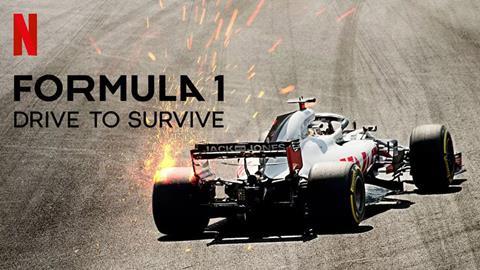Rosie Garschina, executive creative director at Trollbäck+Company, discusses how production companies, broadcasters, and brands can evolve with sport

Last year’s sports calendar featured The FIFA Women’s World Cup, four tennis Grand Slams and a Formula 1 championship. Off the court, rising stars Katie Boulter and Emma Raducanu led women’s tennis to new heights; Lionel Messi and Cristiano Ronaldo dominated social campaigns; and European sports sponsorship measured at a high mark of €20.69bn.
If 2023 was the year that shook up sports, it was also the year that disrupted how we consume them.
The fragmentation that’s now table stakes for the media industry is especially stark in sports, where the prevalence of cord cutting has pushed evermore cable subscribers towards streaming services. The deal between Walt Disney’s ESPN, Fox and Warner Bros. Discovery for combined sports streaming bundle capitalises on this – and is projected to hit five million subscribers in five years.
It’s little wonder people want more streamlined services. Take the Premier League, which took US fans on a journey from NBC to USA Network to Peacock TV via Sling and FuboTV.
As we approach a golden summer of sports with UEFA Euro 2024, the Paris Olympics, Paralympics and Wimbledon all to look forward to, the million-dollar question is, then, how to win and maintain viewer loyalty in such a fragmented, disparate sport-scape?
Experience is paramount
Part of an elegant experience is facilitating a fluid user journey across devices. In a confusing, competitive landscape, people will be drawn to clean, intuitive products and experiences. Serving up your content all in one place with a big land grab is one obvious answer. For example, Apple TV’s exclusive deal with Major League Soccer (MLS) capitalizes on the interest and media hype surrounding Messi’s move to Inter Miami CF.
But it’s not just exclusive access to MLS games that keeps eyeballs on Apple TV, it’s the streamlined user experience around that content. The MLS Season Pass has no blackouts and no switching between apps or channels to find different matches. ESPN also does this beautifully, with a single platform for watching games, checking scores and viewing editorial content.
Keeping up with the pace
Sports face a new challenge, and opportunity, in evolving to attract Gen Z fans, who have different priorities and viewing habits. Major League Baseball has taken steps to update long standing traditions with pitch clocks and larger bases to speed up the game. The NFL adjusted kick-off rules to promote more returns and bring players on both teams closer together. With this we see rules changing to encourage more action on the field, more dynamic viewer experiences, and more opportunities to keep fans constantly engaged.
Following players, not just properties
Gen Z wields serious purchasing power and cultural capital. Industry execs are increasingly aware that in today’s player-focused world, Gen Z audiences follow athletes, not just properties. Now that this cohort can engage directly with the social stories of their favorite players, sports will increasingly rely on weaving in live, digital, and interactive experiences.
Nurturing rising talent will help networks capitalise on their huge popularity and active social followings. Many have captivating stories to tell, for example American tennis player Frances Tiafoe. His is a true rags-to-riches tale of working at a tennis club and waking early to practice before its members showed. Tiafoe may not be a top 5 US/ATP player, but his 753K Instagram followers are showing up to root for him.
Telling layered emotional stories
As demonstrated by the popularity of Full Swing (golf), The Netflix Slam (tennis) and Drive to Survive (Formula 1) on Netflix, the boundaries between sports and entertainment have blurred. Documentaries featuring unscripted, behind-the-scenes content elevate team’s stories and invite fans to interact with players beyond the game.
An editorial content strategy is critical to capitalising on this engagement. Viewers want the option to watch a full match or a five-minute replay of highlights, so clearly packaged and marketed recaps help cut through the noise. When services are fragmented by nature, a smart editorial calendar helps serve up engaging content between games. For platforms that aren’t showing every game or tournament, stopping viewers jumping to another platform will be a challenge. Creating compelling, informative content that adds value beyond the game will keep your audience engaged.
Commentary also adds a further storytelling layer onto the sports viewing experience. Watching tennis with my seven-year-old, I’ve seen first-hand how educating and entertaining facilitates multi-generational viewing. Offering audiences the option to customise this experience will also be important. While some fans enjoy continuous commentary, many viewers prefer to avoid filler and hear sounds of the in-stadium experience at home.
We’re in the midst of a sports media, branding, and marketing revolution, but one constant stands firm: create an intuitive, elegant experience, elevate it with storytelling across relevant channels, and people will come.

Rosie Garschina is executive creative director at Trollbäck+Company




No comments yet